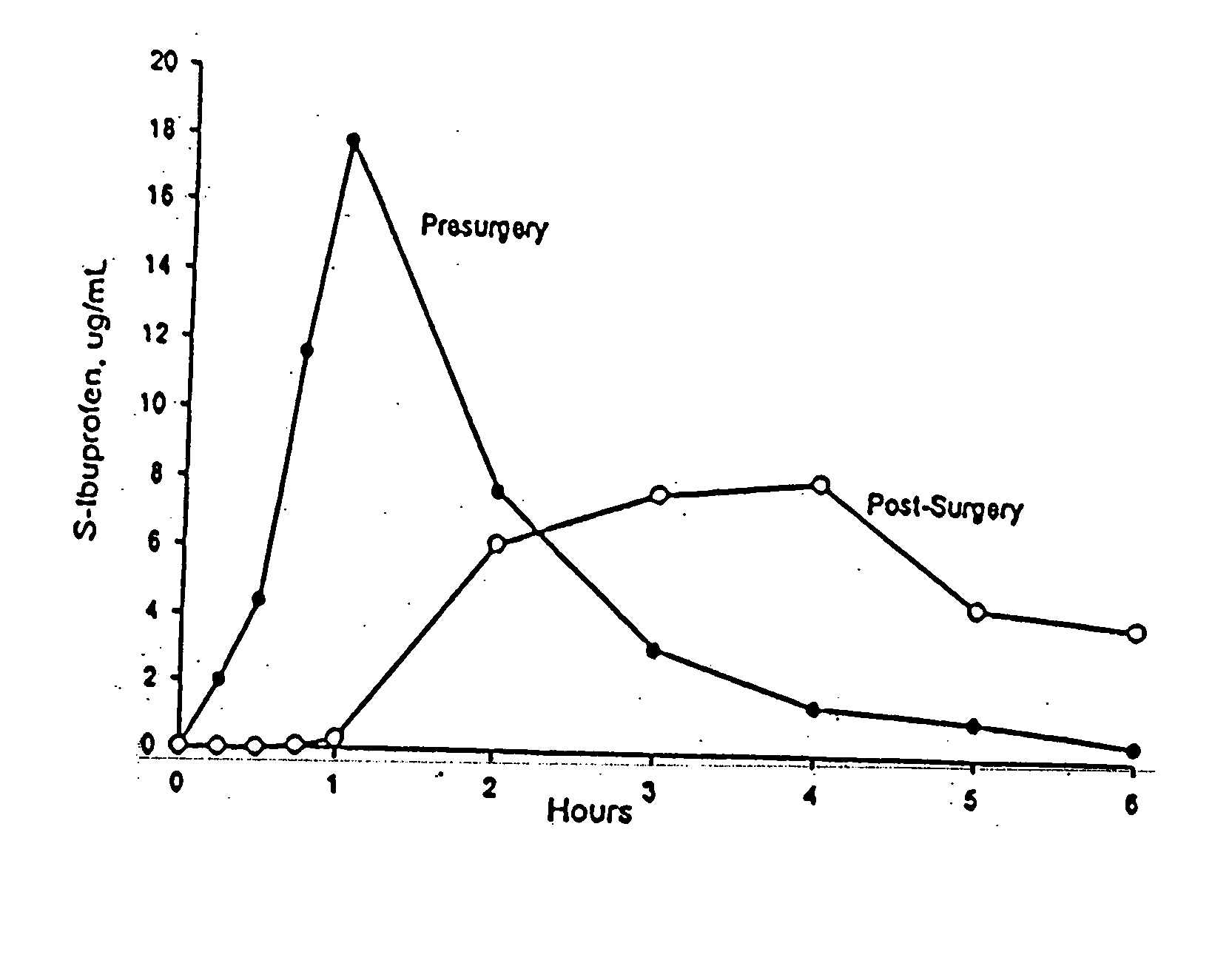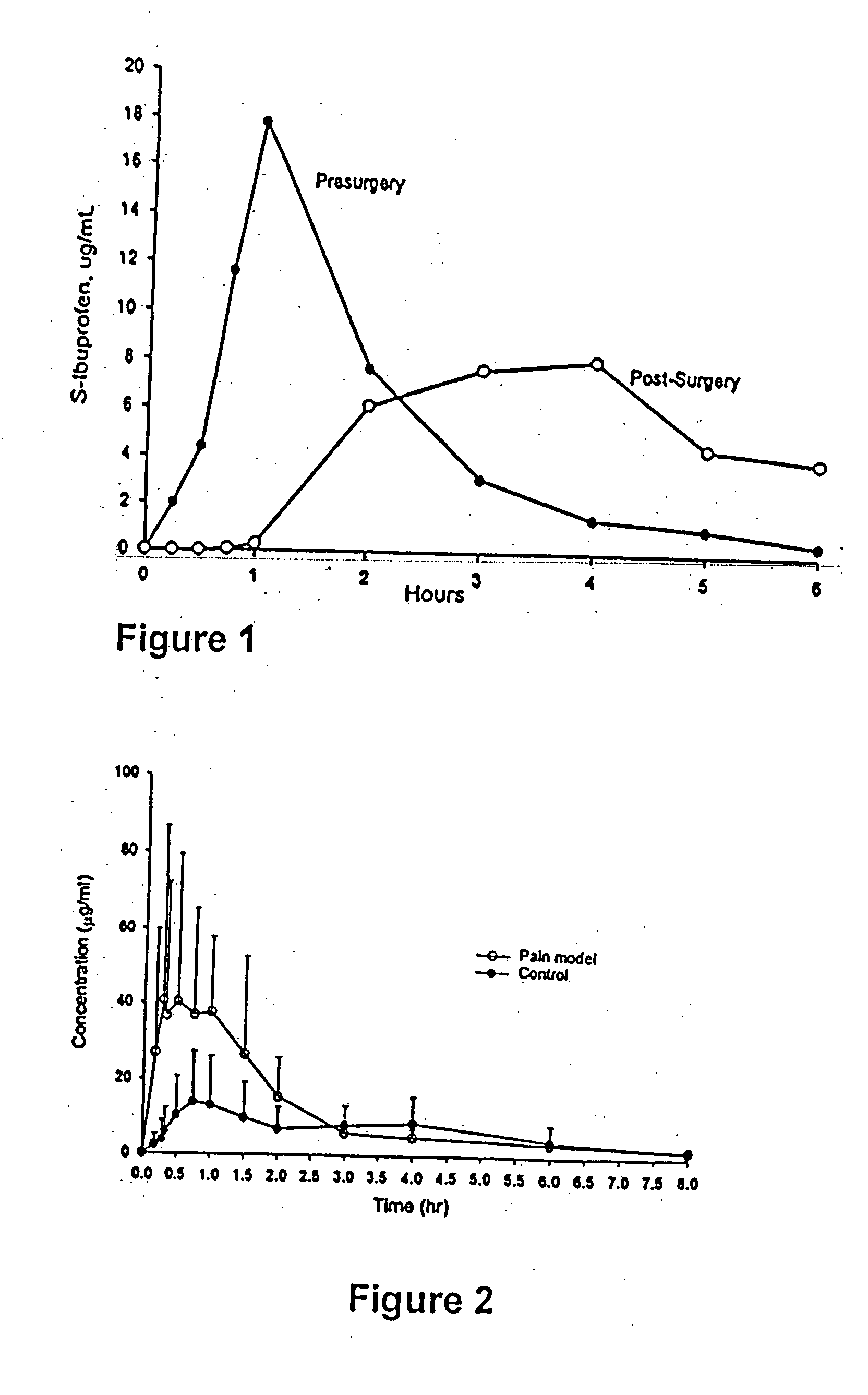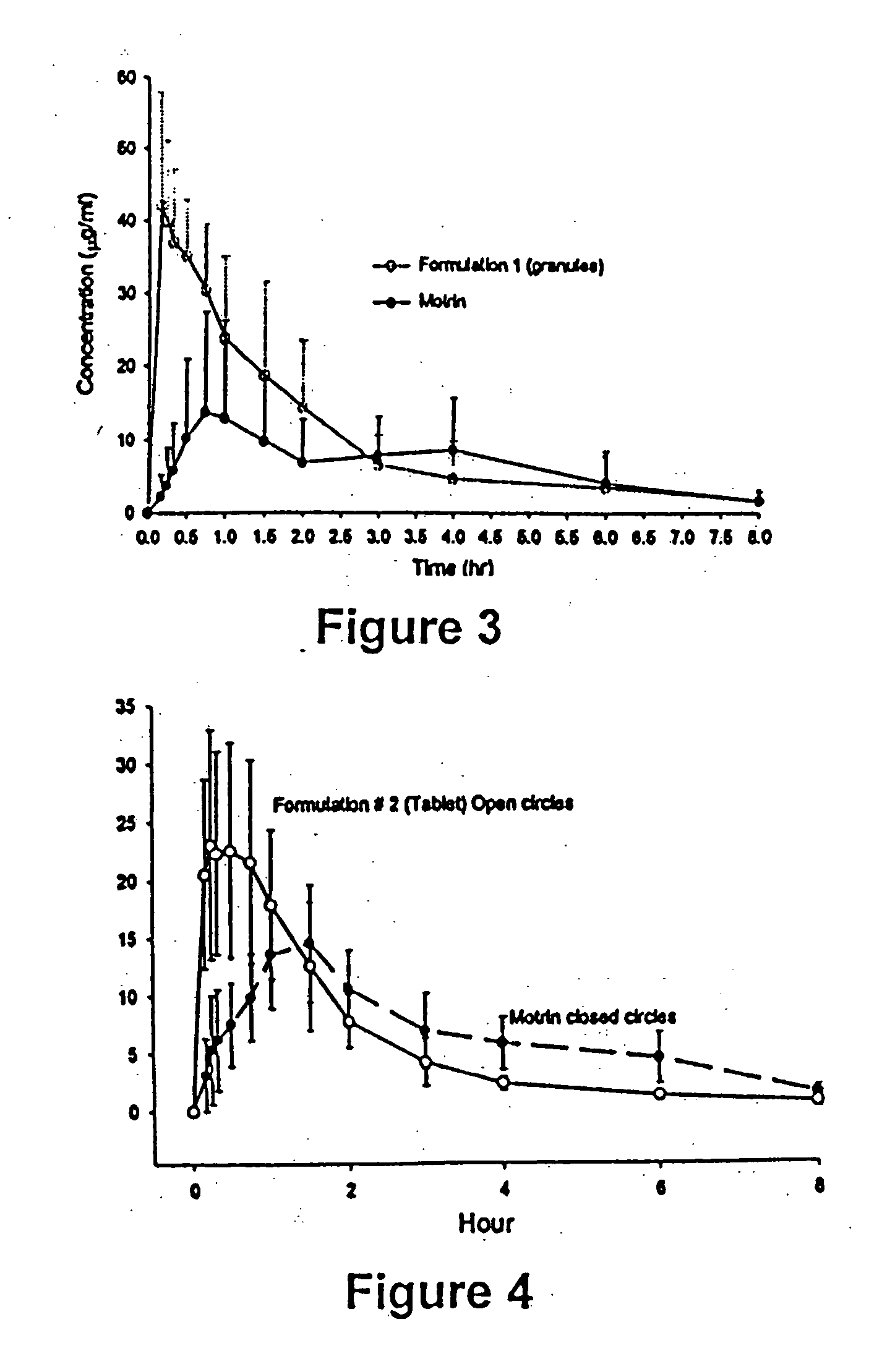NSAIDs compositions containing tartaric acid
a composition and tartaric acid technology, applied in the field of nsaid formulations, can solve the problems of reduced activity of analgesics, no widely available solid dosage form of nsaids has been claimed to be superior over the product, and treatment failur
- Summary
- Abstract
- Description
- Claims
- Application Information
AI Technical Summary
Benefits of technology
Problems solved by technology
Method used
Image
Examples
example 1
[0090] Delayed absorption caused by vagal suppression that has previously been reported in the literature (e.g., Jamali & Axelson, 1997) was used to test the absorption rates of new ibuprofen formulations.
[0091] The animal models are Adult male Sprague-Dawley rats with body weight of 250-300 g, and which were cared for in accordance with the principles and guidelines of the Canadian Council of Animal Care. All rats were catheterized in the right jugular vein for sample collection.
[0092] An animal model having suppressed vagal properties were produced by administering (intraperitoneal injection) to the rats two 20 mg / kg doses of propantheline (test, n=6), an anticholinergic agent with known vagal suppressive properties, the first dose at 2 hours prior to administration of an NSAID, and the second at 1 hour prior.
[0093] One hour after the second dose of propantheline, 20 mg / kg doses of a commercially available ibuprofen tablet (Motrin 200 mg tablets, available from McN...
example 2
[0096] The rat model described in Example 1 was used to test whether an ibuprofen formulation can be made with rapid absorption-rate regardless of vagal suppression.
[0097] This example shows three formulations, a granule and two tablets, are rapidly absorbed even when vagal suppression is present.
[0098] Formulation 1 (ibuprofen granules): Ibuprofen 1000 g; sodium bicarbonate 497 g; and gelucire 41 g. To administer 20 mg / kg of ibuprofen to a 300 gram rat, 9.3 mg of this composition was dosed.
[0099] Formulation 2 (tablet, wet granulation): Ibuprofen 200 g, sodium bicarbonate 80 g, gelucire 15 g, hypromellose 20 g, pre-gelatanized starch 168.4 g; microcrystalline cellulose 84.0 g; sodium croscarmellose 28.0 g; and magnesium stearate 3.0 g. Each tablet weighed 299 mg and contained 100 mg ibuprofen. To administer 20 mg / kg of ibuprofen to a 300 gram rat, the tablet was gently broken into small pieces and 17.9 mg of this composition was dosed.
[0100] Formulation 3 (tablet, dry granulati...
example 3
In Vitro Dissolution Test
[0110] Using the U.S. Pharmacoipoeia Apparatus II, the dissolution rates of ibuprofen alone, ibuprofen plus sodium bicarbonate (1:1 molar based), and ibuprofen plus sodium bicarbonate (1:1 molar based) plus gelucire (5% total weight) were assessed. The apparatus contained 2 g of NaCl and 7 mL of concentrated HCl (pH 1.2) in 900 mL water. The medium was kept at 37° C., and was stirred with a rotating paddle at 75 rounds per minute. Ibuprofen was detected at 232 nm. The amount dissolved per unit time is shown in FIG. 7.
PUM
| Property | Measurement | Unit |
|---|---|---|
| weight | aaaaa | aaaaa |
| weight | aaaaa | aaaaa |
| weight | aaaaa | aaaaa |
Abstract
Description
Claims
Application Information
 Login to View More
Login to View More - R&D
- Intellectual Property
- Life Sciences
- Materials
- Tech Scout
- Unparalleled Data Quality
- Higher Quality Content
- 60% Fewer Hallucinations
Browse by: Latest US Patents, China's latest patents, Technical Efficacy Thesaurus, Application Domain, Technology Topic, Popular Technical Reports.
© 2025 PatSnap. All rights reserved.Legal|Privacy policy|Modern Slavery Act Transparency Statement|Sitemap|About US| Contact US: help@patsnap.com



